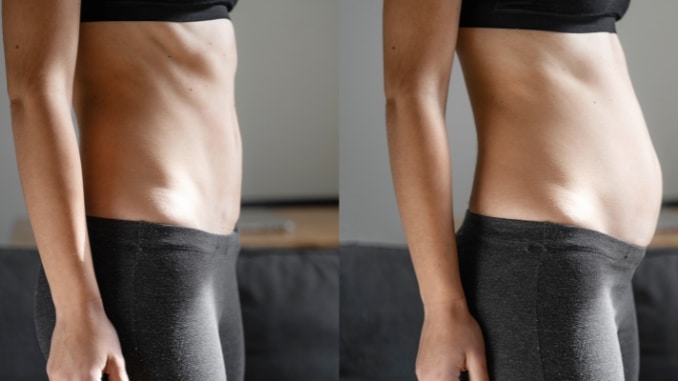For many women, the journey of motherhood is a beautiful and transformative experience, marked by the joys and challenges of pregnancy. Yet, amidst the blessings, there's a common concern that echoes through those who have navigated multiple pregnancies: Diastasis Recti. Diastasis recti (DR) poses several challenges to individuals who experience it, affecting both physical and emotional well-being.
They may find it challenging to regain pre-pregnancy abdominal tone, impacting their self-image and confidence. The condition may also evoke emotional struggles, as the changes in one's body may trigger feelings of frustration, self-consciousness, or a sense of disconnection from one's pre-pregnancy self.
Understanding Diastasis Recti
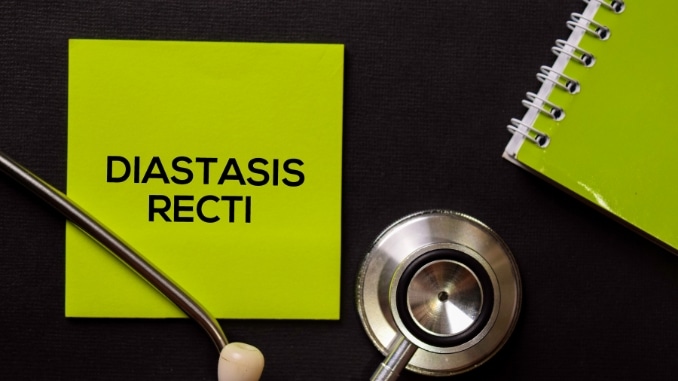
Diastasis recti (DR), commonly known as abdominal muscle separation, is characterized by the parting of the rectus abdominis muscle along the midline of the abdomen. This separation occurs due to the stretching and weakening of the connective tissue known as the linea alba, which normally holds these muscles together.
While diastasis recti is frequently associated with pregnancy, other factors such as obesity and repetitive straining of the abdominal muscles can also contribute to its development. Due to its prevalence, research has found that the majority of healthcare workers [1] encounter DR concerns in their daily practice.
Symptoms
During pregnancy, the growing uterus places significant pressure on the abdominal muscles, leading to the stretching and weakening of the linea alba. Multiple pregnancies, carrying large babies, and insufficient abdominal muscle support can heighten the risk of diastasis recti.
The visible separation of the abdominal muscles becomes more pronounced, especially during the later stages of pregnancy, contributing to the postpartum “mom pooch.”
Symptoms of diastasis recti include a noticeable bulge or gap between the rectus abdominis muscles, particularly accentuated during certain movements. Beyond the cosmetic concerns, diastasis recti can result in functional issues, such as compromised core strength and stability, lower back pain [2], and altered posture, impacting overall health.
While diastasis recti is commonly linked to pregnancy, it can also result from obesity and abdominal strain due to heavy lifting or intense physical activity. Recognizing diverse causes beyond pregnancy is crucial for tailored treatment approaches, emphasizing the need to address underlying factors for effective management.
Treatment and Management
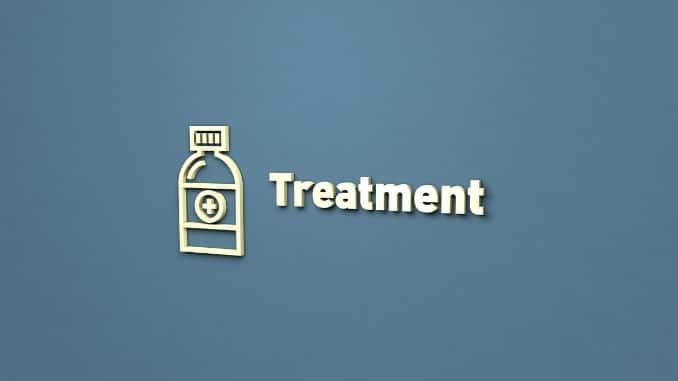
Addressing diastasis recti often involves targeted exercises to strengthen the deep abdominal muscles, including the transverse abdominis. Incorporating a diastasis recti workout routine, which focuses on these deep core muscles, can be beneficial in promoting healing and closing the gap between the separated muscles.
Exercises that emphasize controlled and coordinated movements, as well as engaging the transverse abdominis, play a crucial role in restoring abdominal muscle integrity. It is essential for individuals, especially postpartum women, to seek guidance from a healthcare professional or pelvic floor physical therapist knowledgeable about diastasis recti exercises.
This ensures a tailored approach that considers individual circumstances and promotes effective healing, helping individuals regain core strength, alleviate lower back pain, and improve overall functional well-being.
Methods to Recover from Diastasis Recti
1. Targeted Exercise Program
Enroll in diastasis recti-specific exercise programs designed to strengthen the core and promote healing. These programs, often led by fitness professionals or physical therapists, focus on exercises tailored to address the condition safely and effectively.
2. Pelvic Floor Exercises
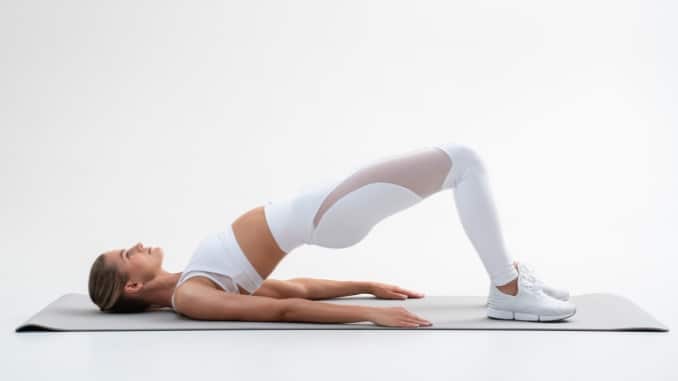
Incorporate pelvic floor exercises, such as Kegels, to enhance overall pelvic stability. Strengthening the pelvic floor contributes to better support for the abdominal muscles, aiding in the recovery process.
3. Modified Abdominal Exercises
Engage in controlled and modified abdominal exercises that avoid straining the midsection. Exercises like pelvic tilts and gentle crunches, performed with proper form, can gradually rebuild abdominal strength without exacerbating diastasis recti.
4. Posture Awareness
Pay attention to posture in daily activities. Maintaining good posture helps distribute abdominal pressure evenly and supports the healing of the connective tissue. Also avoid movements that cause unnecessary strain on the abdominal muscles.
5. Use of Abdominal Support

Consider the use of support like abdominal binders, kinesio tapes or specialized garments. These can provide external support to the abdominal area, especially during activities that may put stress on the weakened muscles, aiding in the recovery process.
6. Professional Guidance
Seek guidance from healthcare professionals, such as physical therapists or specialized trainers experienced in postpartum recovery. A personalized approach, under expert supervision, ensures that recovery methods are tailored to individual needs and promote safe healing from diastasis recti.
Exercises for Diastasis Recti
1. Seated Abdominal Contractions
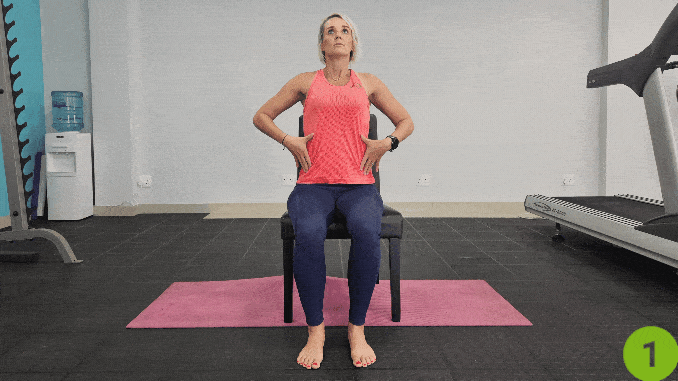
- Begin in an upright sitting position on a chair, maintaining good alignment in your head, shoulders, and hips.
- Bring your hands to your abdominal area with the thumbs pressing just below the rib cage and the pinky fingers above the hip bone.
- Then, take a deep belly breath in, slightly flaring out your abdomen.
- Afterward, exhale through your mouth, contacting your abdominal muscles toward the belly button.
- Start with 1 set of 10 repetitions.
2. Kegel Exercise

- For this diastasis recti exercise, begin in an upright sitting position on a chair, maintaining good alignment in your head, shoulders, and hips.
- Feel your pelvic floor muscles in and around your urethra, vagina, and anus.
- Then take a deep breath in, squeezing and drawing your pelvic floor upward.
- Hold this contraction for several seconds.
- Afterward, breathe out through your mouth, releasing the tension.
- Start with 1 set of 10 repetitions.
3. Grounding
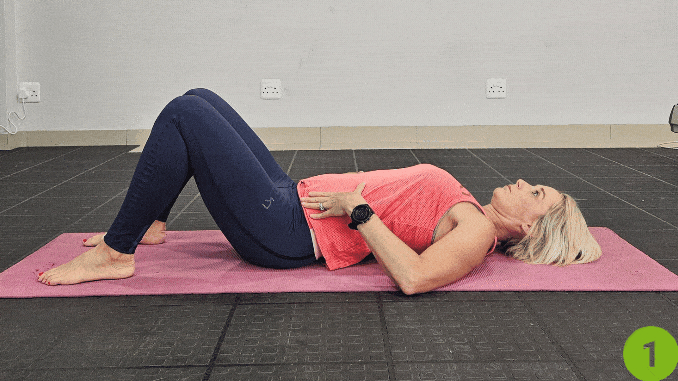
- Lie on the floor with your knees bent and feet flat on the floor, maintaining good alignment in your head, shoulders, and hips.
- Bring your hands to your abdominal area with the thumbs pressing just below the rib cage and the pinky fingers above the hip bone.
- Then, take a deep belly breath, slightly flaring out your abdomen.
- Afterward, exhale through your mouth, contacting your abdominal muscles toward the belly button.
- After 5 repetitions, switch on, take a deep breath in, squeeze, and draw your pelvic floor upward.
- Hold this contraction for several seconds and breathe out through your mouth, releasing the tension.
- Perform this for 5 repetitions.
4. Planking
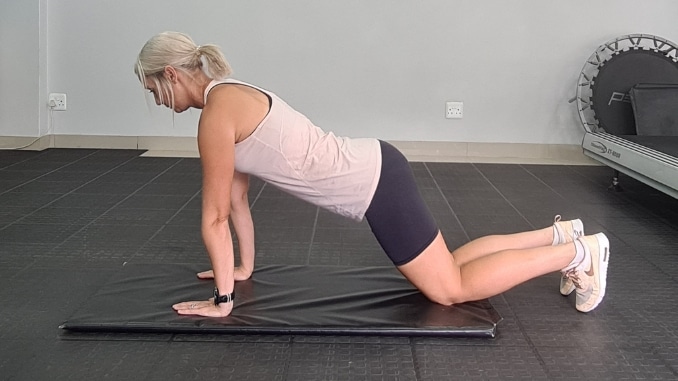
- Begin in a modified high plank position with your knees resting on the floor.
- Then, take a deep belly breath, slightly flaring out your abdomen.
- Afterward, exhale through your mouth, contacting your abdominal muscles toward the belly button.
- After 5 repetitions, switch on, take a deep breath in, squeeze, and draw your pelvic floor upward.
- Hold this contraction for several seconds and breathe out through your mouth, releasing the tension.
- Perform this for 5 repetitions.
Conclusion
In the journey of motherhood, navigating diastasis recti involves both physical and emotional challenges. While exercises and targeted interventions aid in recovery, it's crucial to recognize that healing timelines vary. Diastasis recti may improve naturally, but professional guidance ensures tailored approaches.
Embracing exercises, from seated contractions to planking, empower individuals on their recovery journey. The emphasis is not merely on physical transformation but on holistic well-being, fostering self-love and confidence.
Importantly, the path to recovery involves acknowledging and appreciating the body's resilience. Body positivity takes center stage, especially for postpartum mothers, reminding them that each step forward, regardless of pace, is a triumph.
In this narrative, the strength of the body mirrors the strength of the spirit, embracing the beauty of the evolving self through the transformative phases of motherhood. The focus extends beyond healing diastasis recti to encompass overall abdominal wall health and well-being.
In just minutes each day, you can easily strengthen your pelvic floor muscles, allowing you to finally live the life you want. Check out this 10 Gentle Yoga Poses for Strong Pelvic Floor now!

